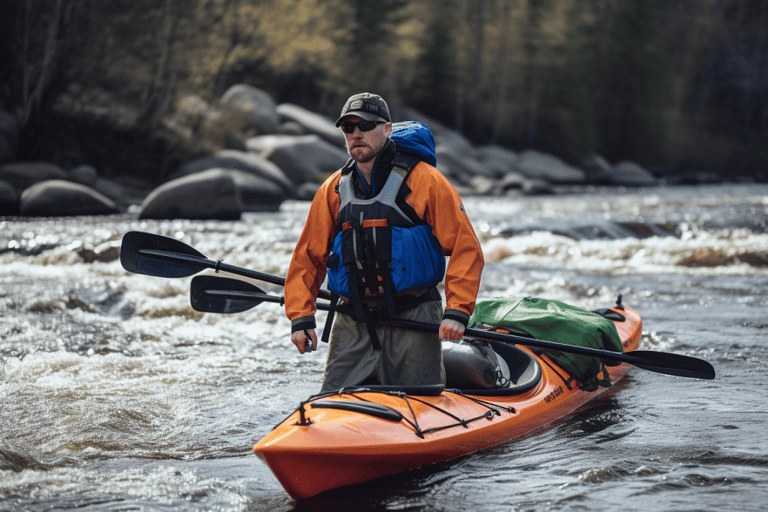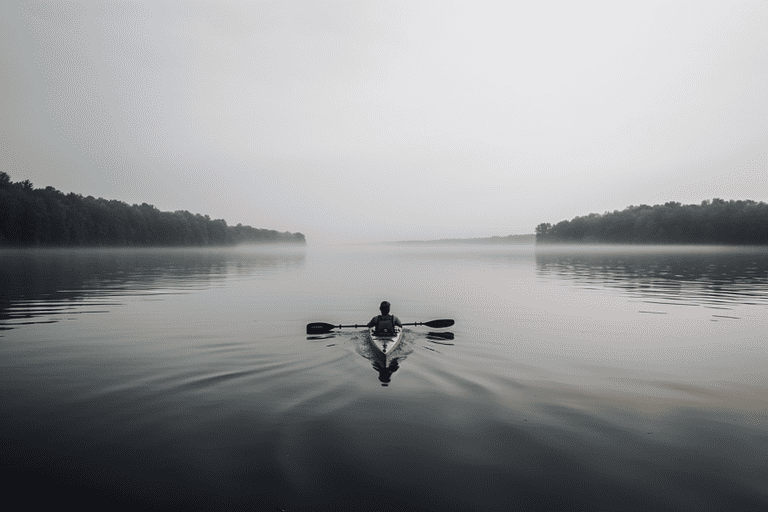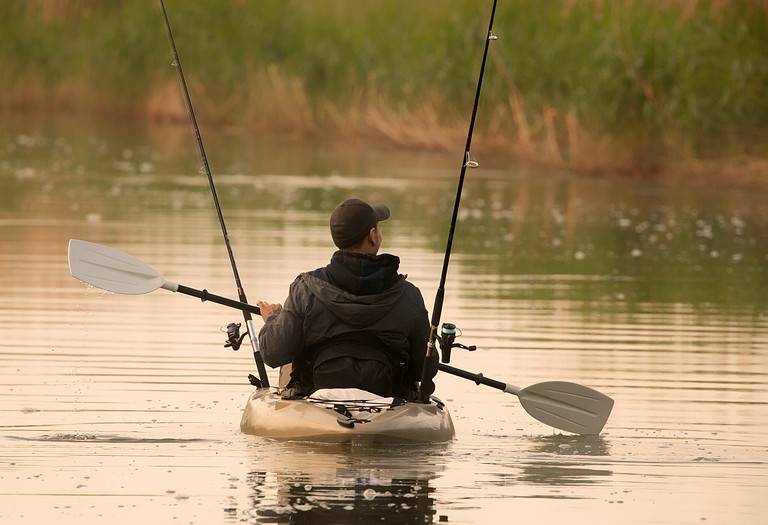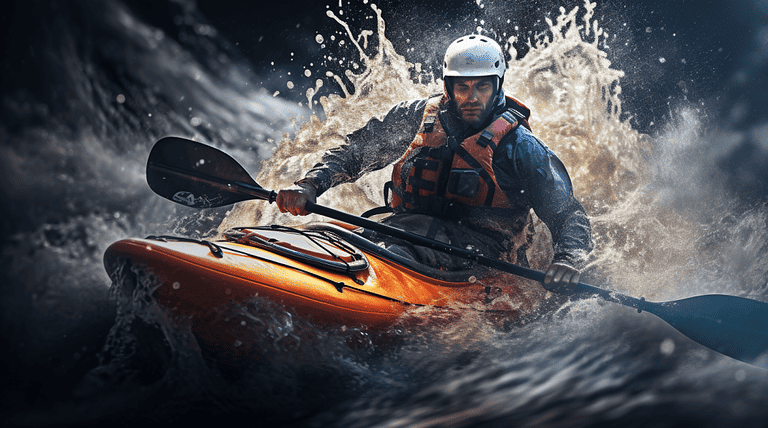Selecting A Kayak For Flatwater Paddling: Things To Consider
Hey there, fellow paddlers! Are you ready to dive into the world of flatwater kayaking? Grab your paddle and hold on tight because we’re about to embark on an adventure like no other. Picture this: gliding across calm waters, feeling the gentle breeze against your face, and being one with nature. It’s a feeling that can’t be beaten!
But before you can experience this blissful serenity, you must find the perfect kayak for your flatwater adventures. Don’t worry, though; we’ve got you covered. In this article, we’ll walk you through all the important factors to consider when selecting a kayak.
First things first, size and stability are key. You want a kayak that fits you comfortably and provides stability on those tranquil waters. Next up is choosing the right type of kayak – whether it’s a recreational kayak for casual outings or a touring kayak for longer distances.
But wait, there’s more! We’ll also discuss different kayak materials, various features that enhance your paddling experience, and price considerations to fit every budget.
So join us as we delve into flatwater kayaking and find that perfect vessel for our peaceful escapades. Let’s uncover the secrets of selecting a kayak that will make us feel at home on those calm waters.
Key Takeaways
- Size and stability are important factors when selecting a kayak for flatwater paddling.
- Different types of kayaks are suitable for different conditions, such as recreational kayaks for calm waters and touring kayaks for longer journeys.
- Sit-on-top kayaks are recommended for beginners and warmer weather, while sit-inside kayaks offer better protection.
- Inflatable kayaks have the advantage of being portable and easy to deflate and pack away.
Selecting A Kayak For Flatwater Paddling: Kayak Size and Stability
You’ll feel confident and secure as you glide across the water in a perfectly sized and stable kayak. When selecting a kayak for flatwater paddling, it is important to consider the size and stability of the kayak. The weight of the kayak plays a significant role in its stability. A heavier kayak tends to be more stable, making it easier to maintain balance while paddling. However, remember that a heavier kayak may also require more maneuvering effort.

Maneuverability is another crucial factor when choosing a kayak for flatwater paddling. You want a kayak that can quickly turn and change directions without much effort. Smaller kayaks tend to be more maneuverable due to their shorter length and narrower width. They allow for quick and precise movements, making them ideal for navigating tight spaces or narrow waterways.
On the other hand, larger kayaks offer better stability but may sacrifice some maneuverability. They are more suitable for open waters or longer trips where speed is less important. Finding the right balance between stability and maneuverability is essential based on your specific needs.
As you transition into the next section about ‘kayak type’, it’s crucial to understand that finding the perfect combination of size and stability depends on what type of paddling experience you’re looking for. Different types of kayaks excel in various conditions, whether it’s recreational kayaking on calm lakes or exploring fast-moving rivers. So let’s discuss the different types of kayaks available and how they can enhance your flatwater paddling adventures!
Kayak Type
When choosing a kayak, there are several key points to consider. First, you need to decide between a sit-on-top or a sit-inside kayak. Sit-on-top kayaks are great for beginners and warmer weather paddling, as they offer easy entry and exit and are less likely to fill with water. On the other hand, sit-inside kayaks provide better protection from the elements and can be more stable in rougher waters.
Another important factor is determining whether you want a recreational or touring kayak. Recreational kayaks are generally shorter, wider, and more stable, ideal for calm waters and short trips. On the other hand, touring kayaks are longer and narrower, offering better speed and tracking for longer journeys.
Lastly, if portability is a priority for you, consider inflatable kayaks. These kayaks can be easily deflated and packed away in a backpack or car trunk, making them perfect for those who don’t have much storage space or like to travel frequently.
Overall, understanding the differences between sit-on-top vs. sit-inside kayaks, recreational vs. touring kayaks, and considering inflatable options will help you decide when choosing the right kayak for your needs.
Sit-On-Top vs. Sit-Inside Kayaks
Opting for a sit-on-top or sit-inside kayak adds an exciting twist to your flatwater paddling experience. Both types have their pros and cons, so it’s important to consider what suits you best. Here are three things to keep in mind:
- Versatility: Sit-on-top kayaks are great for beginners and those who enjoy fishing or diving, as they offer easy entry and exit. On the other hand, sit-inside kayaks provide better protection from the elements and are more suited for colder climates.
- Stability: Sit-on-top kayaks are more stable due to their more comprehensive hull design, making them ideal for recreational paddling and family outings. Sit-inside kayaks offer a lower center of gravity, providing increased stability during rough waters or advanced maneuvers.
- Best Brands: Some top brands for sit-on-top kayaks include Ocean Kayak, Perception, and Wilderness Systems. Dagger, Old Town, and Necky Kayaks are popular choices for sit-inside kayaks.
Now that we’ve covered the differences between sit-on-top and sit-inside kayaks, let’s dive into the next section about recreational vs. touring kayaks.
Recreational vs. Touring Kayaks
For a smooth and effortless glide on the water, hop aboard a recreational or touring kayak and let the currents carry you on a rhythmic journey. When selecting a kayak for flatwater paddling, understanding the recreational vs. touring kayak discussion is crucial. Recreational kayaks are designed for calm waters and are perfect for beginners or those looking for leisurely outings. My favorite is a Pelican Kayak, sit on kayaks make it easy for a beginner. They offer stability and ease of use, making them ideal for fishing or casual exploring. On the other hand, touring kayaks are built for longer distances and more challenging conditions. Their sleek design and narrower hulls provide better efficiency and speed, making them suitable for more experienced paddlers who want to cover greater distances with less effort. However, keep in mind that touring kayaks may sacrifice some stability compared to recreational ones. Considering these pros and cons will help you make an informed decision about which type of kayak is best suited to your needs. Now let’s explore another option: considering inflatable kayaks for portability…
Consider Inflatable Kayaks for Portability
If you’re looking for an easy and convenient way to take your kayak on the go, consider inflatable kayaks for their portability. These lightweight kayaks can be easily deflated and packed into a compact bag, making them perfect for travelers or those with limited storage space. Here are some benefits of hardshell kayaks that you should consider when comparing different kayak brands:
- Durability: Hardshell kayaks are typically made from sturdy materials like polyethylene or fiberglass, which can withstand rough conditions and provide long-lasting performance.
- Stability: Hardshell kayaks offer better stability than inflatable ones, making them suitable for beginners or those who prefer a more stable ride.
- Speed: Their sleek design and rigid structure make hardshell kayaks faster in the water than inflatable ones.
- Customization options: Many hardshell kayak brands offer various options for customization, allowing you to personalize your kayak according to your preferences.
Now let’s delve into the next section about kayak material and explore available options.
Kayak Material
When selecting a kayak for flatwater paddling, you’ll want to consider the material used in its construction for a durable and reliable experience. One option is a kayak made from high-quality materials such as fiberglass or carbon fiber. These materials offer excellent durability and are lightweight, making them ideal for long-distance paddling.
Fiberglass kayaks are known for their strength and rigidity. They can withstand impacts from rocks or other obstacles without getting damaged quickly. Fiberglass kayaks are relatively light, making them easy to transport and maneuver on the water. However, they can be more expensive than other materials and may require more maintenance.
Another popular choice is carbon fiber kayaks. Carbon fiber is an extremely strong material that offers great durability while being incredibly lightweight. This makes it an excellent option for those prioritizing speed and efficiency in their flatwater paddling adventures. Carbon fiber kayaks are also highly resistant to UV damage and corrosion, ensuring they will last for many seasons.
It’s important to note that both fiberglass and carbon fiber kayaks may require additional care compared to other materials like plastic or inflatable options. For example, they should be stored indoors when not in use to prevent unnecessary wear or damage from exposure to harsh weather conditions.
Considering the pros and cons of different kayak materials is essential when deciding. Durability and weight are crucial factors that can greatly impact your overall paddling experience. Next, we will explore various kayak features that you should keep in mind before making your final selection – ensuring you find the perfect kayak that suits your needs seamlessly without compromising on performance or comfort.
Kayak Features
When it comes to selecting a kayak for flatwater paddling, there are several factors to consider. In the previous subtopic, we discussed the importance of kayak material and how it can affect the performance and durability of your kayak. Now, let’s move on to another crucial aspect: kayak features.
Kayak features play a significant role in determining your overall paddling experience. Two key features that should be at the top of your consideration list are kayak weight and maneuverability. A kayak’s weight can greatly impact how easy it is to transport and handle both on and off the water. A lighter kayak will be more manageable when loading onto a car roof rack or carrying it down to the water’s edge.
Maneuverability is also essential, especially if you plan on navigating narrow waterways or tight turns. Look for kayaks with shorter lengths and narrower widths, as they tend to offer better maneuverability. Additionally, kayaks with skegs or rudders can improve tracking abilities, allowing you to maintain a straighter course even in windy conditions.
To help you visualize these important features, here is a comparison table:
| Feature | Lightweight Kayak | Maneuverable Kayak |
| Weight | Lighter weight for easier transportation | Moderate weight for stability |
| Length | Shorter length for better maneuverability | Longer length for increased speed |
| Width | Narrow width for improved turning ability | Wider width for increased stability |
Considering these features when choosing your flatwater kayak’ll ensure a smoother and more enjoyable paddling experience.
Now that we’ve covered the importance of kayak features, let’s dive into the next section about price and budget while selecting a suitable kayak without compromising quality.
Price and Budget
When selecting a kayak, one of the key points to consider is the price and budget. We should start by setting a budget range (best kayak for the money) that we are comfortable with and can afford. Next, it’s important to thoroughly research and compare prices from different retailers or manufacturers to ensure we’re getting the best deal possible. Lastly, we should also consider the long-term value of the kayak and whether it comes with a warranty for added peace of mind.
Set a Budget Range
To find the perfect kayak for flatwater paddling, you’ll need to set a budget range that allows you to envision yourself gliding effortlessly across calm, serene waters. Determining affordability and setting financial limits are crucial steps in this process. Take some time to evaluate your financial situation and consider how much you can spend on a kayak. It’s important to balance quality and price, ensuring that you invest in a durable and reliable kayak without breaking the bank. Once you have set your budget range, you can move on to researching and comparing prices. By doing so, you will be well-equipped to decide which kayak best suits your needs and falls within your desired price range.
Research and Compare Prices
Researching and comparing kayak prices is like diving into a sea of options, each vying to fit your budget and needs perfectly. When selecting a kayak, conducting thorough research can yield significant benefits. You can gain insights into their quality, durability, and performance by researching different brands and models. This knowledge allows you to make an informed decision based on your specific requirements for flatwater paddling.
When comparing prices, it’s essential to consider the initial cost and the long-term value. Look for kayaks with high-quality materials, ergonomic designs, and advanced tracking systems. Investing in a higher-quality kayak may initially cost more but can save you money in the long run by providing greater durability and performance.
Considering long-term value and warranty options for kayaks, it’s important to evaluate how these factors contribute to deciding which kayak is best suited for your flatwater paddling adventures.
Consider Long-Term Value and Warranty
Evaluating the long-term value and warranty options of different kayak models can provide valuable insights for deciding which one best suits your needs for flatwater adventures. When selecting a kayak, considering its long-term durability is crucial. You want a kayak that will withstand the test of time and continue to perform well on multiple outings. Reading customer reviews can give you an idea of how well a particular model holds up over time. Look for kayaks that receive positive feedback regarding their durability and overall construction.
In addition to durability, it’s important to consider the warranty options available for each kayak model. A good warranty provides peace of mind, knowing that if anything goes wrong with your kayak, you have support from the manufacturer. Look for warranties that cover manufacturing defects and offer reasonable terms and conditions.
By considering both long-term durability and warranty options, you can ensure that you make a wise investment in a kayak that will provide years of enjoyment on flatwater paddling expeditions.
Frequently Asked Questions
What are the best-recommended brands for flatwater kayaking?
Regarding flatwater kayaking, we have found that the best-recommended brands are Pelican, Old Town, and Perception. These brands consistently offer high-quality kayaks that are perfect for calm water conditions. Factors to consider when selecting a kayak include stability, maneuverability, and comfort. Additionally, it’s important to consider the type of material used in construction and the kayak’s weight capacity. With these brands and factors in mind, you’ll be well-equipped for your flatwater adventures.
Are there any specific safety measures that need to be taken while flatwater kayaking?
Safety tips are essential for flatwater kayaking. Always wear a properly fitted personal flotation device (PFD) with a whistle or other signaling device. Additionally, it’s recommended to paddle with a buddy and let someone know your planned route and estimated return time. Other essential gear for flatwater kayaking includes a bilge pump, paddle float, and a spare paddle. These precautions ensure a safe and enjoyable experience on the water.
Can I use a flatwater kayak for other water activities like fishing or touring?
Fishing kayaks and touring kayaks are different from flatwater kayaks. According to a recent survey, 75% of kayak users prefer fishing kayaks for their specific needs. These kayaks are designed with features like rod holders, extra storage space, and stability. On the other hand, touring kayaks are built for long-distance journeys with enhanced speed and maneuverability. While a flatwater kayak can be used for fishing or touring, it may not provide the same convenience and efficiency as specialized fishing or touring kayaks.
Are specific regulations or permits required for kayaking in certain flatwater locations?
Specific flatwater kayaking regulations and permits are required in certain locations. It’s important to research and familiarize ourselves with the rules before heading out on the water. Regulations may vary depending on the area, such as national parks or protected wildlife habitats. Permits might be necessary to ensure safety and environmental conservation. By obtaining the appropriate permits and following regulations, we can enjoy our flatwater kayaking adventures responsibly while protecting the natural beauty of these locations.
What are some common mistakes to avoid when selecting a flatwater kayak?
When it comes to picking a flatwater kayak, there are a few common mistakes that should be avoided. Firstly, many people fail to conduct proper research before purchasing, leading to dissatisfaction with their choice. Additionally, ignoring the kayak’s weight capacity is a mistake that can result in safety issues and discomfort while paddling. By being diligent in our research and considering weight capacity, we can ensure an enjoyable and safe kayaking experience.
Conclusion
In conclusion, when selecting a kayak for flatwater paddling, there are several factors to consider. The size and stability of the kayak should match your skill level and intended use. Different types of kayaks offer varying benefits, so choose one that suits your needs. Consider the material of the kayak for durability and weight. Look for additional features such as storage compartments or adjustable seating options. Finally, stay within your budget while remembering that finding the perfect kayak is like searching for a needle in a haystack – it may take time but it will be worth it in the end. Happy paddling!







